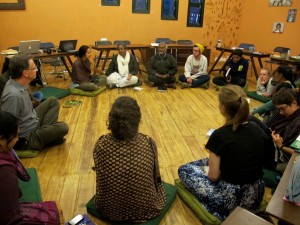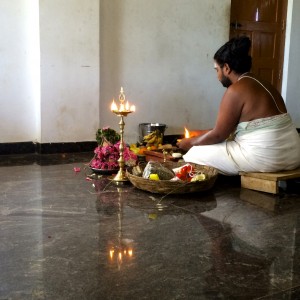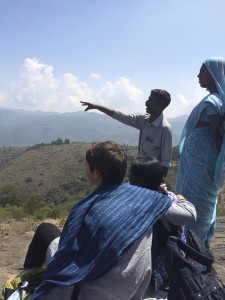From Jocelyn Lee
This past week, things have started to click. In the beginning, we seemed to be creating a rough sketch of where we are, why we are here, and who we are in relation to our fellow community member students. This sketch has become more finely detailed as we have erased and redrawn lines, and then continued to revise as we see things in new light. However, over the past several days we have begun to fill in the lines with color (to continue the metaphor). The nuances and contradictions of the various distinct cultures surrounding us are slowly becoming more apparent, enriching our understanding of this region.
One of the concepts emphasized in class this week was “thick description” – the idea that any given cultural act or object is part of a complex web of meaning, where you cannot begin to understand something without exploring the context and underlying connotations. Often used half jokingly and half seriously by us in conversation, the term “thick description” perfectly encapsulates Week 4.
From a wedding that we attended to in-class activities, we learned just how much one can miss by failing to study an experience beyond its surface level. We are discovering “thick description” in our relationships with the community member students, as well. While in the beginning of the semester we were often challenged to think critically about our own lives and worldviews, we are now focusing more closely on the worldviews and webs of meaning that exist among the surrounding adivasi communities. When addressing these topics, it is imperative that we continue to remind ourselves of our own biases and perceptions of truth and to leave room for reimagining them.
The kinds of conversations that we are having with the community member students touch on matters of dignity, shame, feelings of inferiority, loss of culture, and personal responsibility and decisions. On Friday, we visited the Toda village of Kuttan, a Keystone staff member. He explained the gap in understanding between his people and the government regarding the land.This dialogue requires a new kind of sensitivity and self-awareness on our part that I think we are all becoming increasingly aware of. I am finding that with “thick description” of culture comes a sort of “thick” analysis of self and of what you do with the complexity of knowledge that you gain.

The NFLC team discusses changes in adivasi livelihoods and the implications of loss of traditional knowledge
Many of the days recently have ended with all students and teachers sitting on cushions in a circle on the floor, letting the conversation go where is natural (while still tying into class themes of the day). I so deeply appreciate that we can have these times of informal learning – there is enough structure that we have proper translations to facilitate the conversation, but there is also a certain “unstructuredness” that allows for sharing of thoughts and stories, without the pressure that a formal classroom sometimes imparts. It is during these discussions that I am challenged to think the hardest, be utterly confused and overwhelmed, yet also feel inspired and motivated.


Jocelyn, you write so movingly & beautifully! I am so proud of you.
Recently, the students at our school have been making great strides in their understanding of color. I have enjoyed watching them as they have gone through their workbooks and tried to find the answers to some of the questions they have asked.The first lesson involved noticing certain colors in nature and comparing them to ones that were similar or different. They noticed that some plants had a lot of green, while others had different shades of green. For students I am also looking for education resources through https://www.how2pc.com/best-online-education-resources-for-students/ website that can make students to enhance their learning experience with those resources.